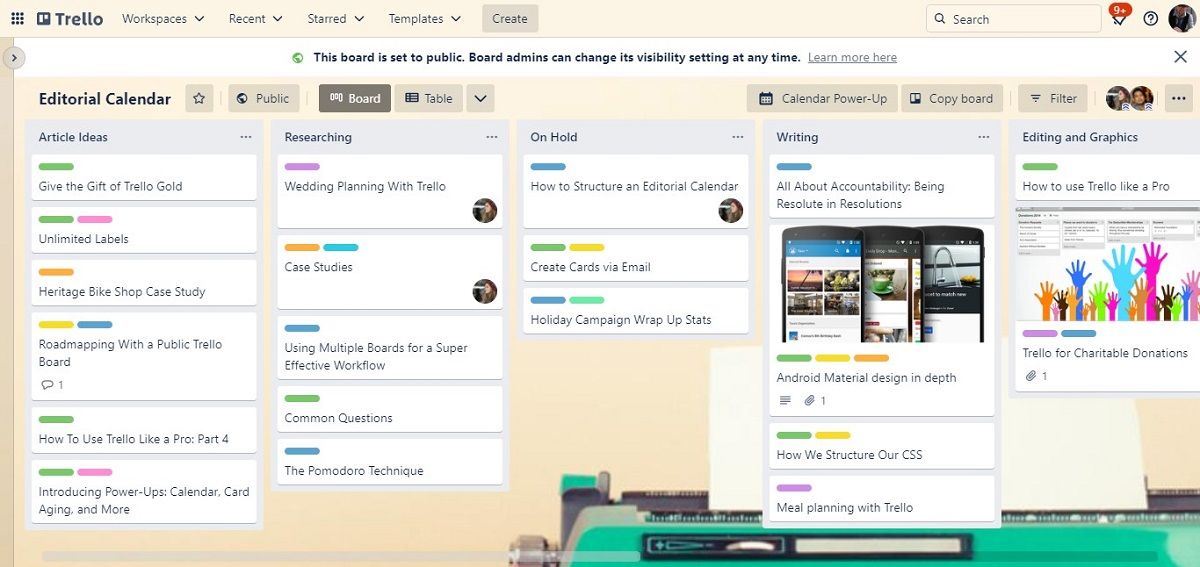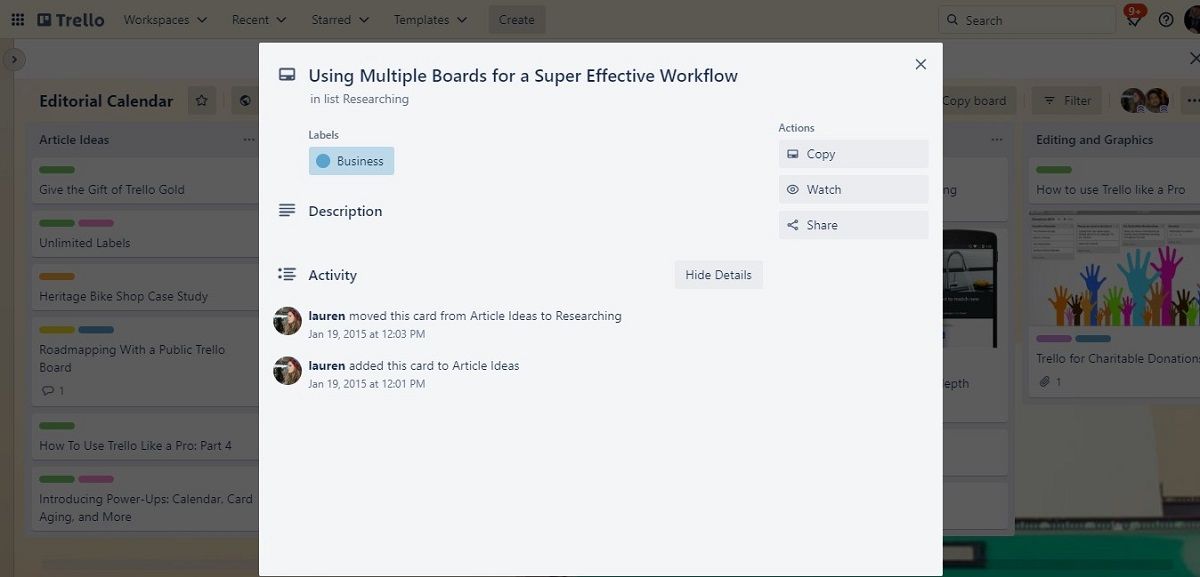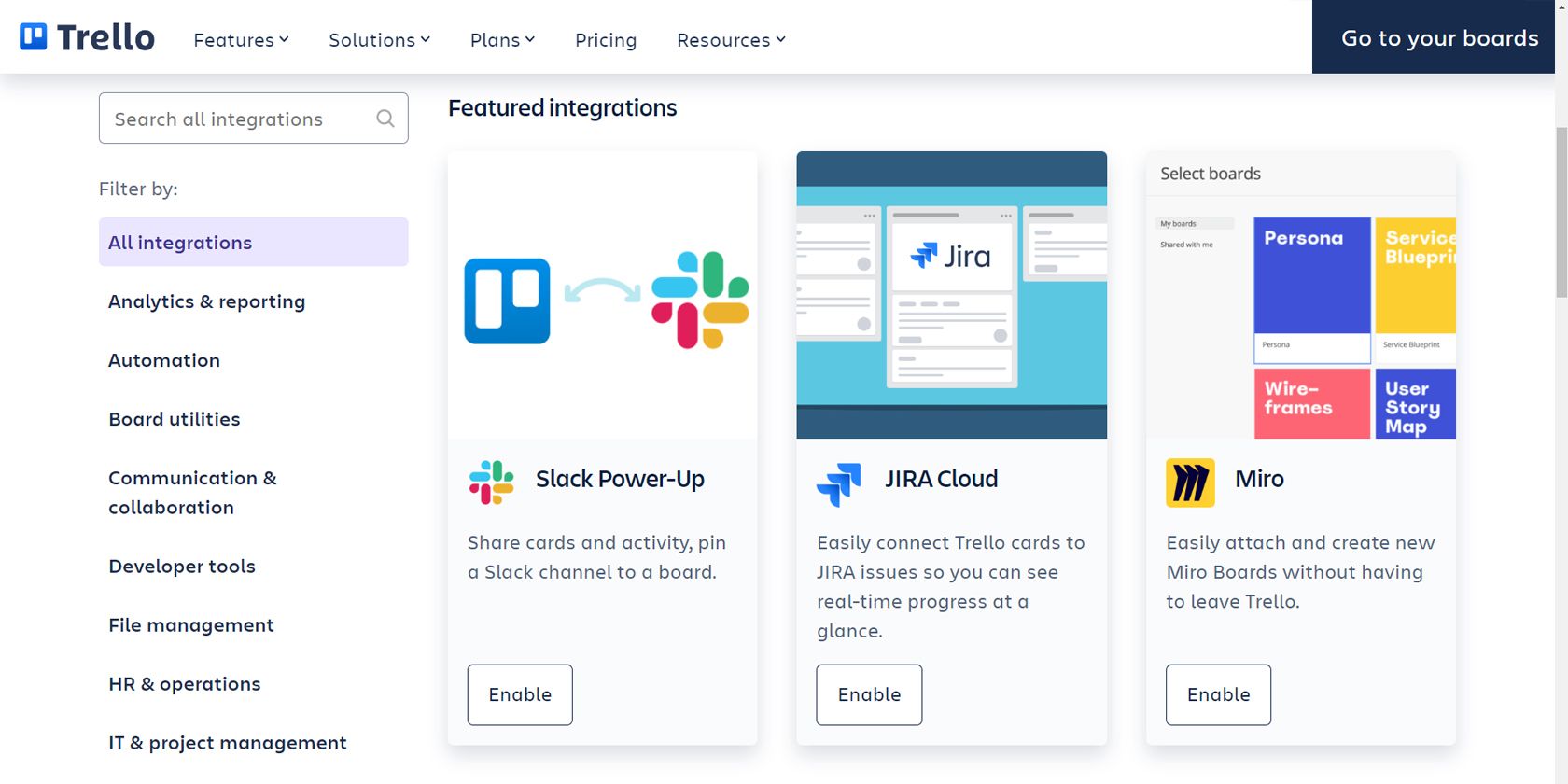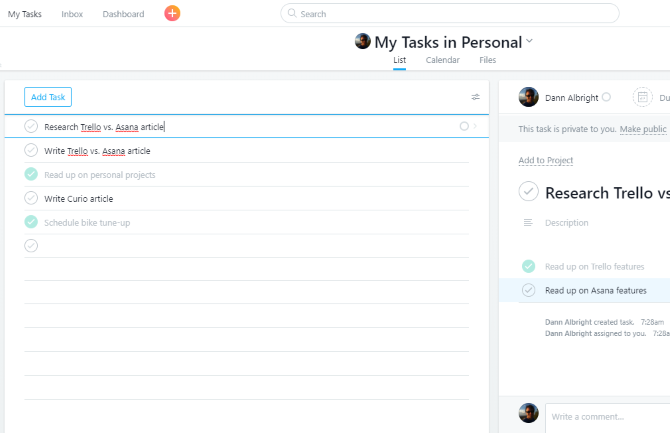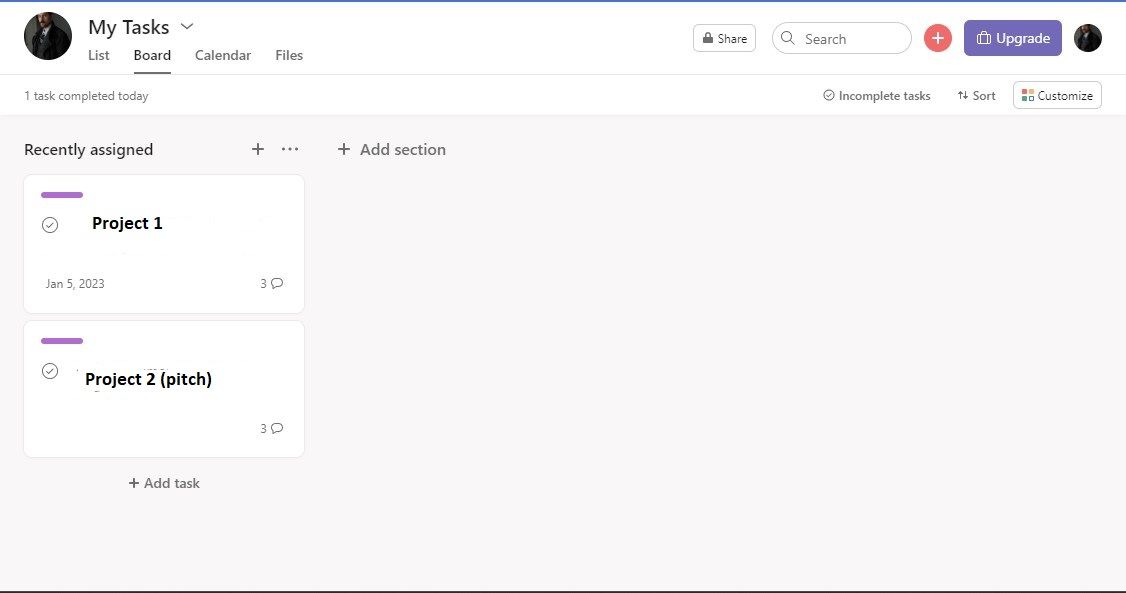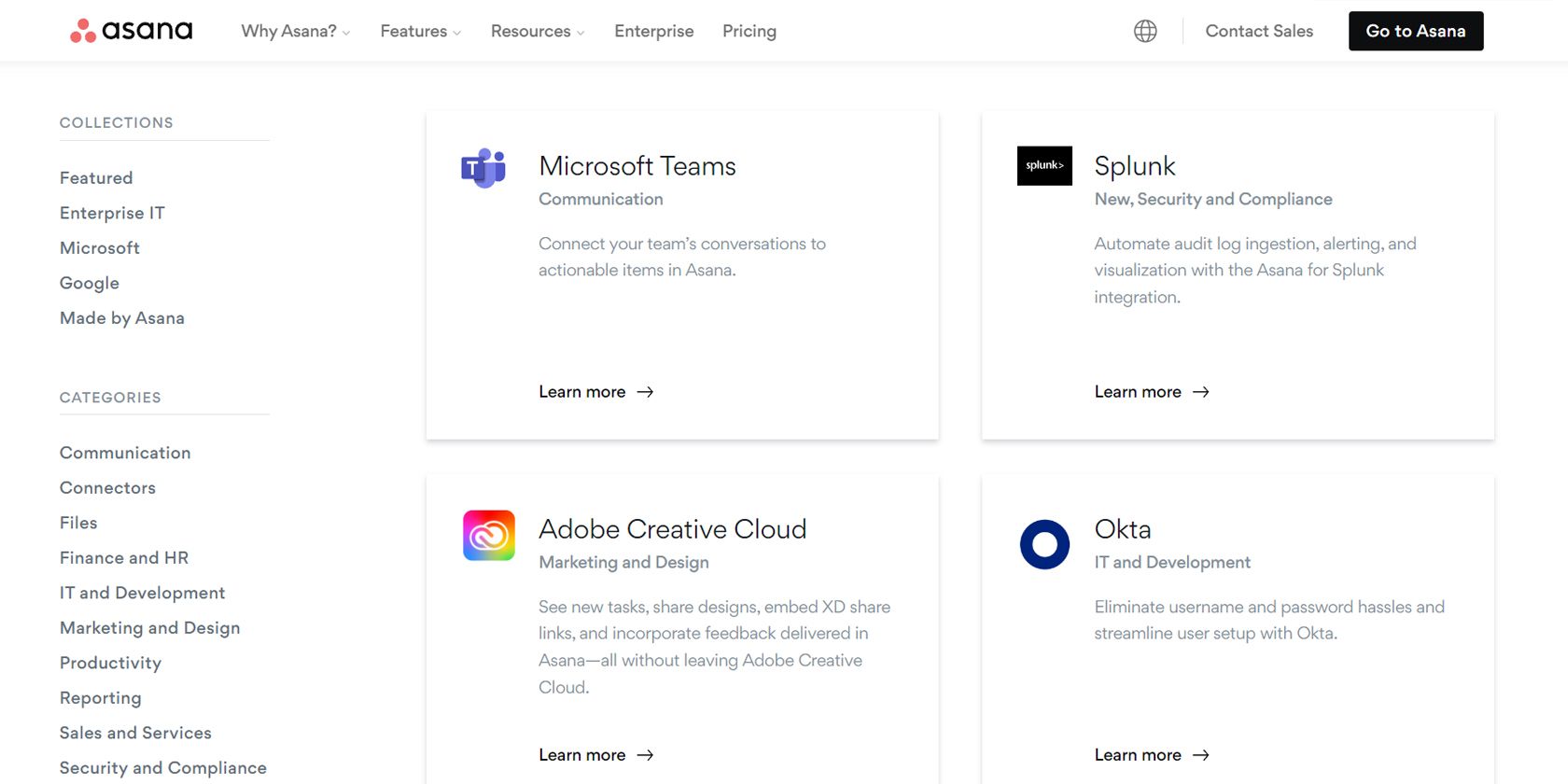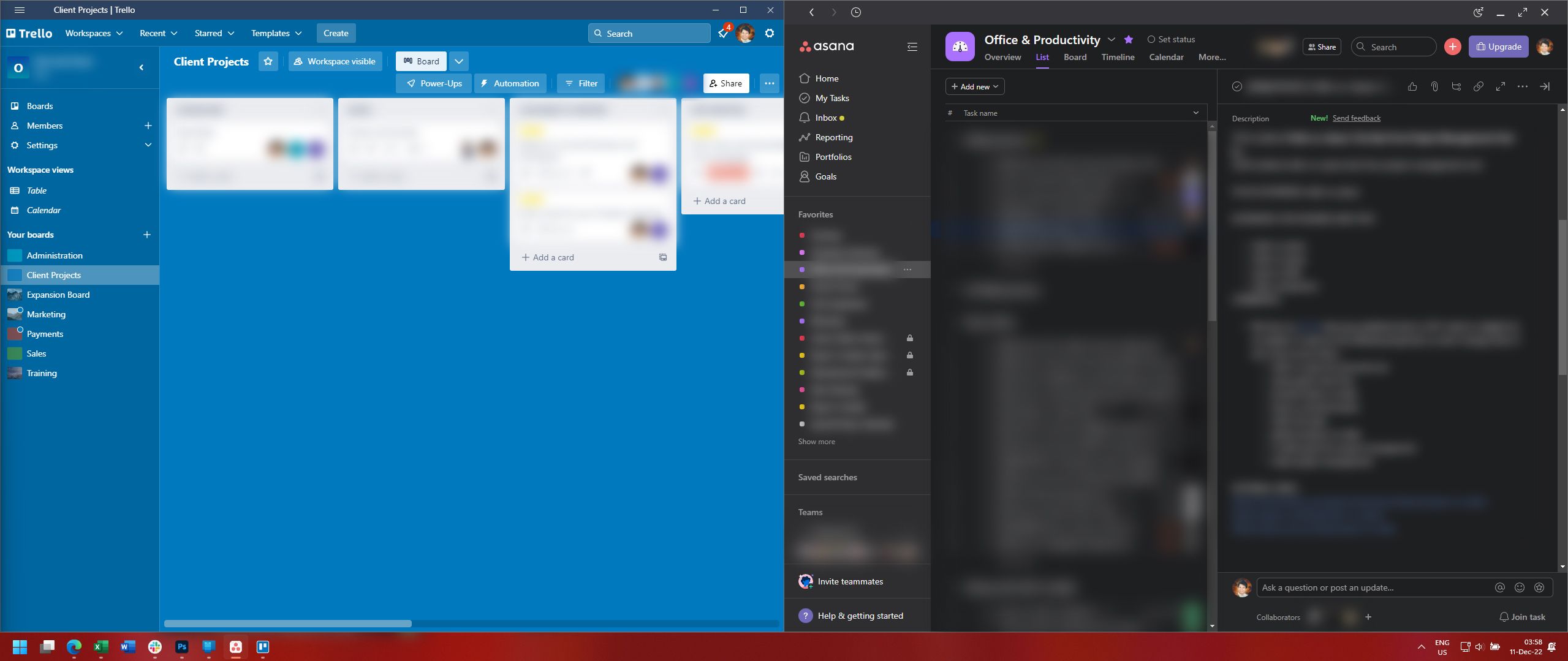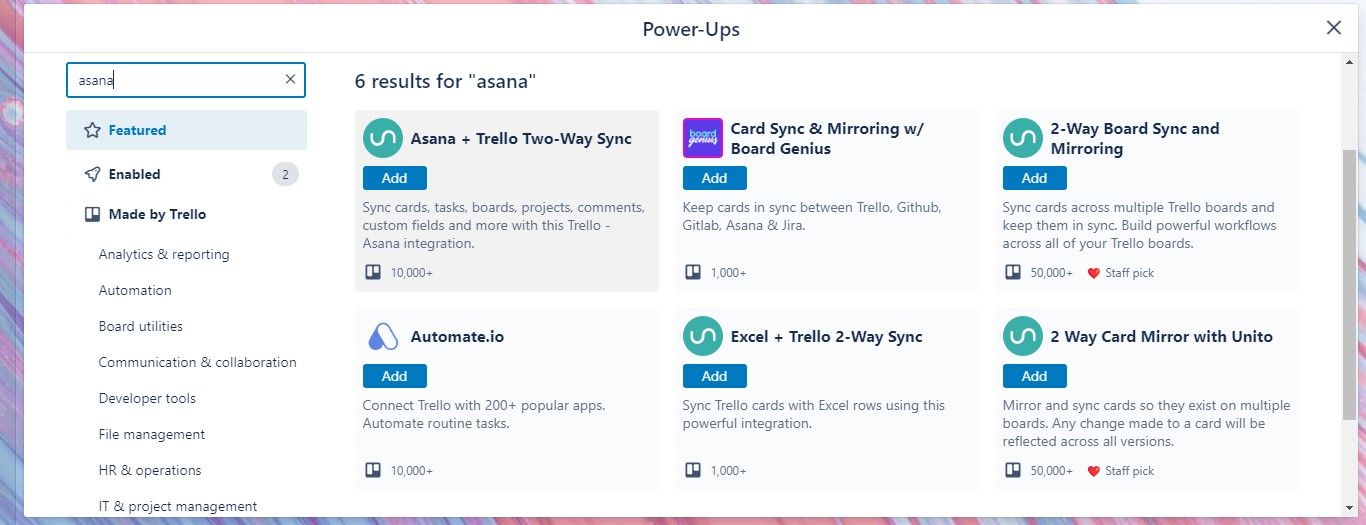When deciding on a free project management tool, many organizations (and even enterprising individuals) find themselves confronted by the same choice: Trello vs. Asana. These are two of the biggest names out there, and they both give you a lot of project management power without sapping your bank account.
Deciding between the two can be difficult. So we'll help by breaking down the basics of each and comparing what you get in the free plans. Ultimately, you'll see whether Trello or Asana is better for your business or projects.
Trello: Simple Card-Based Kanban Project Management
We'll start with Trello. If you're unfamiliar with Kanban project management, you might be a little confused about how it works. But the idea behind it is relatively simple. Here's the process:
- You establish columns, categories, or steps for your workflow.
- You write tasks on cards and put them in a column.
- Team members work on those cards and move them through the columns.
The original version of Kanban used Post-Its and whiteboards. But today, we use digital tools to accomplish the same thing. This visual method of project management helps you quickly see where tasks are, who's working on them, and where they'll go next.
This is great for linear workflows that always (or almost always) follow the same process. Making editorial calendars in Trello, for example, is common.
Ideas move from left to right, going through each necessary step in the process. Of course, you can also move cards back and forth if necessary, for example, if an article needs revision or updates or if a prepared article needs to be placed on hold while an embargo date draws nearer.
Here's Trello's sample board that shows how an editorial calendar might look:
A group of columns is called a board. You can have as many boards as you want. Each board could represent a team, a division of your organization, a project, a category of tasks, or anything else you think would be a useful delineation.
Each card can contain a wide variety of information. Here are some of the options:
- Description
- Assigned users
- Color-coded tags
- Due date
- Task list (with checkboxes)
- Attachments
- Messages
- Update notifications
There's also the option to add custom fields. So, if there are more project-specific pieces that you need to keep track of, you don't need to rely entirely on the pre-generated fields that Trello offers.
You can use a Trello board for yourself to help you stop forgetting things at work. However, the platform's power really scales when you invite other team members to work on the boards with you.
Users can talk about cards by leaving comments. You can also call out team members specifically so that they get a notification for important card updates. Those conversations are recorded on the card, where they can be referenced later. This makes the Trello card an excellent vehicle for communicating about specific tasks without cluttering inboxes or instant messaging clients.
Managing Your Team With Trello
Of course, a good project management tool does more than just assign tasks. It also lets you manage your team and make sure everyone has access to the things they need.
Assigning team members to cards is only the beginning. You can also make your boards visible to only certain groups, give people different permissions levels, and change commenting permissions on individual cards.
Trello makes it easy for your team members to find the cards that need their attention. They can filter by due date, see only the cards they're assigned to, or look at cards with specific tags. It's also easy to search for cards.
Powering Up Trello With Integrations
Trello's visual nature and easy drag-and-drop workflow make it a powerful tool. But when you combine it with other services, you get a project management system that really stands out. Trello calls these integrations "Power-Ups."
You can always attach files from your cloud storage apps, but the Dropbox power-up lets you see previews of your documents and automatically updates them. The Evernote power-up enables you to attach notes, meaning you can combine your Evernote project management with Trello. GitHub lets you attach branches, commits, issues, and pull requests to cards.
You can track your time, add links to dedicated video chat rooms, integrate with Slack (which itself is a great collaboration tool), view your Trello cards in a Gantt chart, and more. Dozens of major services integrate with Trello. If you're already using a tool, it's worth checking to see if it can interface with Trello.
What You Get for Free With Trello
Trello's free plan gives you unlimited boards, lists, cards, members, checklists, and attachments. Those attachments, however, can only be up to 10 MB each. You also get one power-up per board.
If you upgrade to the premium plan, which costs $10 per user per month, you get unlimited power-ups, board collections, custom board backgrounds, and priority customer support. There's also a less expensive "Standard" option for small teams and a more robust "Enterprise" plan for whole organizations. You can see a full breakdown of features on the Trello pricing page.
You can use Trello entirely within a browser or as an app, so whether you're using a Windows PC, a Mac, a Linux computer, or a Chromebook, you can easily manage your projects.
Download: Trello for iOS | Android | Mac | Windows (Free, subscriptions available)
Asana: Versatility With a Learning Curve
One of the most significant advantages of Trello is that you can fire it up and be quite adept at using it very quickly. Asana takes a bit longer to get the hang of, but once you do, it gives you a lot of project management power.
In the Trello vs. Asana debate, one important thing about Asana gives it a distinct advantage: you can set up both traditional task lists and Kanban-style boards. The basic task list is much like you'd expect and includes features you'll find in many of the best task management software apps.
You get sub-tasks, due dates, descriptions, and comments, and the ability to assign tasks to specific projects (which function like boards in Trello). In the premium version of Asana, you can also mark task dependencies, which is useful when some tasks depend on others.
The Kanban board view in Asana looks a lot like Trello:
Again, you have columns with cards. You can then assign and add subtasks, due dates, and other information to each card. They can be tagged with color-coded tags, as well. Sub-tasks assigned in cards also show up on a user's task view.
The ability to switch back and forth between these two different views is great for large teams that have different kinds of projects. With Asana, you can set up a Kanban editorial calendar and then create a totally different task list for other projects, like search engine optimization or reviewing old articles.
And like Trello, you can have multiple projects, which is great for keeping team members from being overwhelmed.
Asana also has good reporting functionality: you can create multiple dashboards that show you the status of different projects for yourself or your team members. Technically, you can do this with Trello, too, by using different boards, but the function is a lot more navigable on Asana.
Managing Your Team With Asana
Asana's team management features are similar to Trello. You can make specific projects visible to certain members, prevent members from seeing team conversations, and tweak specific permissions.
Creating tasks and cards that you assign to team members will help you use Asana effectively and significantly reduce email clutter. The My Tasks tab also makes it easy for everyone to see what's been assigned to them. And, of course, leaving comments on tasks makes communication easy to manage and reference.
Powering Up Asana With Integrations
Asana integrates with many of the same services that Trello does. You can attach files directly from cloud storage, email tasks and cards, track your time, and more. You can even integrate Asana with many of its competitors, including JIRA and Pivotal Tracker. Many customer-service apps also work with Asana, making it easy to create tasks when a customer or client makes a request.
There are many integrations with apps traditionally associated with development, like GitHub, Slack, Microsoft Teams, and most browsers, email providers, cloud storage providers, etc. This makes Asana a good choice for organizations already using a variety of tools for development tracking. Check out the Asana app integrations page to see what else you can do with other apps.
What You Get for Free With Asana
The free version of Asana gives you unlimited tasks, projects, and conversations. However, you can only have up to 15 members. You'll also get access to basic dashboards and search.
The premium version, priced at $10.99 per user per month, gets you unlimited members, custom dashboards, advanced search capabilities, task dependencies, custom fields, private teams, and priority support. There's also a $24.99 Business plan with even more advanced reporting and management options. Get the full details from the Asana pricing page.
Like Trello, Asana is available in-browser or as an app.
Download: Asana for iOS | Android | Mac | Windows (32-bit) | Windows (64-bit) (Free, subscriptions available)
Which Is Better? Trello or Asana?
Before we share our recommendation, let's take a quick look at the features of both:
|
Trello |
Asana |
|
Kanban-based, visual project management |
Kanban-style or task-based project management |
|
Easy learning curve |
Steeper learning curve |
|
Unlimited users |
Up to 15 users |
|
Workspaces can become cluttered |
"My Tasks" section makes prioritizing easy |
|
Best suited for linear processes |
Built-in reporting and dashboards |
While different organizations have different needs, Asana's versatility makes it a great choice for almost everyone. The ability to track tasks in a traditional task-list view or on a Kanban board gives it a level of versatility that Trello doesn't have.
Of course, that versatility comes with a steeper learning curve. The Asana interface is, by necessity, more complex than Trello. If you're inexperienced with the app, finding what you're looking for can take longer.
Trello, however, is great when all you need is a central repository for tasks and a system to communicate about them. It's easy to learn and use, and many people already have at least a passing familiarity with it. It's also fantastic as a personal life management tool. In fact, you can use Trello for just about anything.
Trello vs. Asana: The Choice Is Up to You
In the end, both Trello and Asana are fantastic tools. Which you use for your organization will likely come down to the details. Does Asana's task-list-and-Kanban-board format appeal to you? Or do you want to keep things simple? Do you want to manage a large team without paying a monthly fee? Are your users quick learners? Or will they benefit from a tool with an easier learning curve?
You'll need to consider all these questions when deciding on Trello or Asana. But two things should put your mind at ease if you're having trouble making this decision. First, both are great apps and will help you manage your team. If you're not using project management software right now, either app will make a huge difference.
And second, you can use Trello and Asana together. They integrate, so you can transfer data between the two, sync your tasks and cards, and use both. Or use Migrator.xyz to move data from one to another when you want to switch. You're not locked in forever.
Try One Or Both!
Since both apps are free, it won't cost you to try both. You can start with Trello and see if it's sufficient for your needs. If you find it too simple, you can just as easily switch to Asana with the migration tools mentioned earlier. By doing so, you'll get a first-hand experience of what both project management apps are like to use.
And when you know the differences between Trello and Asana, you can make a final decision and commit to a subscription. So, pick one, try it out, and start managing projects more efficiently.


